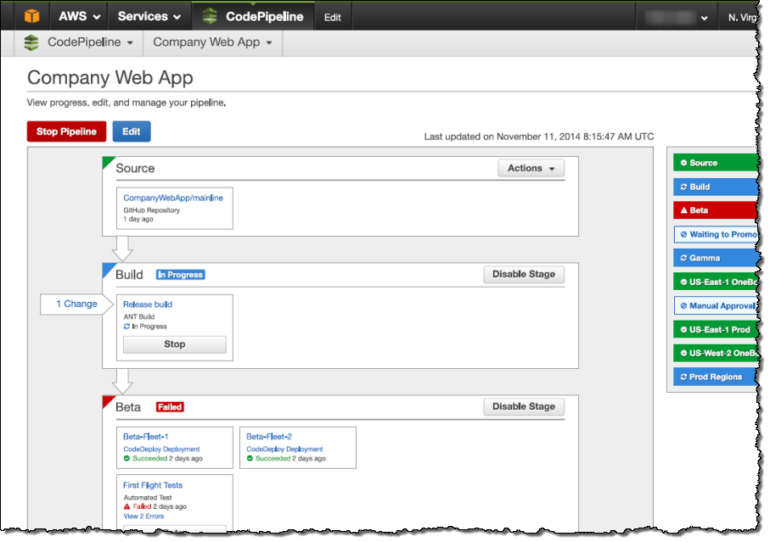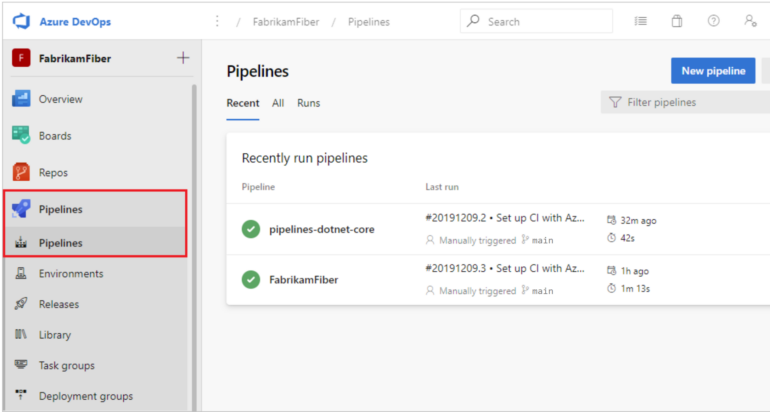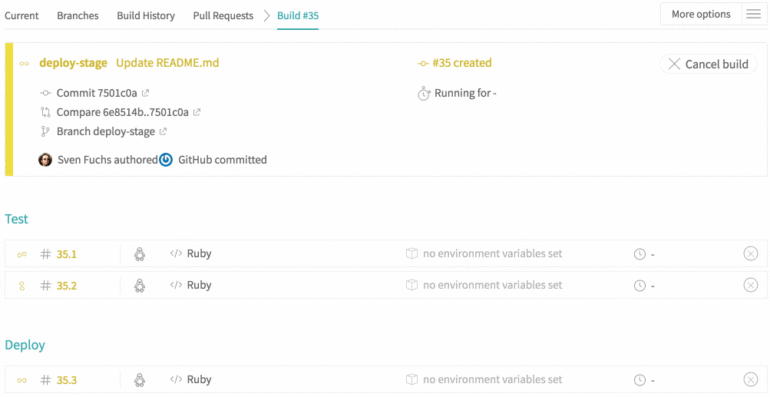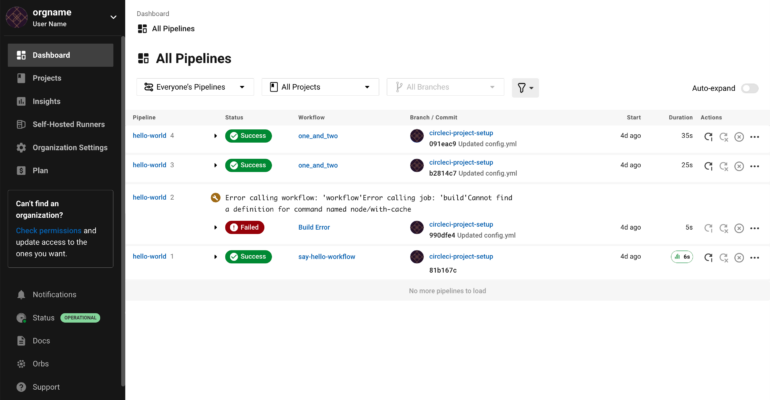AWS CodePipeline is a fully-managed continuous integration and continuous delivery (CI/CD) service from Amazon Web Services. Developers, DevOps engineers, release managers, project managers, operations teams, and others involved in software development can use the service to automate their software release processes, deliver applications reliably and rapidly, gain detailed insight into release status, integrate with their favorite tools, and more.
Is AWS CodePipeline the ideal CI/CD service for your development needs? We will help answer that question by looking at its features, pricing, advantages, and disadvantages. And, to give you some flexibility when choosing a continuous delivery tool, we will also reveal some of AWS CodePipeline’s top alternatives.
Overview of AWS CodePipeline
Amazon Web Services introduced AWS CodePipeline in 2015. The CI/CD service was created to help development teams stuck with traditional software delivery methods that lacked transparency and were error-prone and time-consuming. With AWS CodePipeline, development teams of all sizes can ditch those common problems of the past and enjoy streamlined and automated software release processes, plus fast and reliable delivery.
Features of AWS CodePipeline

AWS CodePipeline has several features developers can use to increase speed, efficiency, and productivity. Here are some of the highlights that can help automate your software development processes:
- Workflow modeling.
- Parallel execution.
- Declarative templates.
- Integrations.
- Custom plugins.
- Notifications.
- Access control.
Workflow modeling
Pipelines are made up of stages (build, test, deploy, etc.) that logically divide your workflow.
Each stage, meanwhile, is comprised of a series of actions or tasks (building code, deploying to test environments, etc.). Thanks to the graphical user interface in AWS CodePipeline, developers have the power to create, configure, and manage their pipelines, stages, and actions. This makes it much easier to visualize and model release process workflows.
Parallel execution
Developers can accelerate workflow speeds in AWS CodePipeline by modeling build, test, and deployment actions to run in parallel.
Declarative templates
Declarative JSON documents in AWS CodePipeline let developers define pipeline structure. These documents that detail release workflow, stages, and actions can be used as starting templates for new pipelines. They can also be used to update existing pipelines.
Integrations
AWS CodePipeline integrates out of the box with many AWS services. That alone is a plus, but as a bonus, it also integrates with many popular third-party tools to give developers even more flexibility.
For example, you can use AWS CodeCommit, Amazon S3, or Amazon ECR to pull source code for your pipeline. You can use AWS CodeBuild to run builds and unit tests. And for deployment, you can use AWS CodeDeploy, Amazon Elastic Container Service, AWS Fargate, or AWS Elastic Beanstalk. Other AWS integrations include AWS CloudFormation, AWS Lambda, Amazon DynamoDB, Amazon API Gateway, and AWS Serverless Application Model.
What about third-party tools? AWS CodePipeline lets you seamlessly integrate them into various stages of your release process too. Best of all, it can be done with one click. Examples of AWS CodePipeline’s third-party integrations for source control, building, testing, deployment, and security include GitHub, CloudBees, Jenkins, TeamCity, BlazeMeter, Ghost Inspector, Micro Focus LoadRunner Cloud, Runscope, XebiaLabs, and Snyk.
Custom plugins
Beyond integrating with popular third-party tools like Jenkins and GitHub, AWS CodePipeline also gives developers the option to integrate with their own custom systems.
Integrate the CodePipeline open-source agent with your servers, and you can register a custom action that hooks your servers into your pipeline. You can also register existing build servers as a custom action via the CodePipeline Jenkins plugin.
Notifications
AWS CodePipeline ensures developers stay in the loop with notifications. Whenever events impact your pipelines, you can receive Amazon (Simple Notification Service) SNS notifications that include status messages and links to the resources whose events triggered them.
Access control
AWS CodePipeline provides access control through AWS (Identity and Access Management) IAM. You can use it to manage who can control or edit your release workflow, with access granted via SAML-integrated directories and IAM users or roles.
AWS CodePipeline pricing
AWS CodePipeline pricing lets developers only pay for what they use without worrying about any commitments or upfront fees. Here are its pricing options:
- AWS Free Tier: One free active pipeline per month for new and existing customers.
- AWS CodePipeline: $1 per active pipeline per month.
AWS encourages experimentation by offering free pipelines for the first 30 days after they are created. Regarding “active pipelines,” they are defined as ones that have existed for over 30 days and have at least one code change during the month. Any pipelines with no new code changes during the month will incur no charge. Regarding the AWS Free Tier, it is worth noting that free usage will not accumulate. Lastly, there may be additional charges for the following:
- Triggering actions from other AWS and third-party services connected to your pipeline.
- Storing and accessing pipeline artifacts in Amazon S3.
You can learn more about AWS CodePipeline’s pricing here. Use the AWS Pricing Calculator to get a single, custom estimate for your AWS CodePipeline and architecture cost by entering your location and the number of monthly active pipelines. You can also get a personalized quote by contacting an AWS specialist.
Pros of AWS CodePipeline
AWS CodePipeline has several advantages that make it an attractive tool for development teams, such as:
- Automations for releases and continuous delivery.
- Scalability/flexibility.
- Integrations.
- Easy to use.
The biggest advantage of using AWS CodePipeline is automation. By automating your release process and achieving continuous delivery, you can minimize human error and maximize speed. AWS CodePipeline is scalable and flexible. Since it is a fully-managed continuous delivery service from Amazon Web Services, CodePipeline’s scalability and flexibility can handle virtually any pipeline you throw at it, regardless of size or complexity.
AWS CodePipeline’s various integrations with AWS Services and third-party tools add to its flexibility and let developers use their favorite tools to build, test, and deploy applications. Another pro in AWS CodePipeline’s favor is user-friendliness, as many have noted that the service is easy to set up, maintain, and use.
Cons of AWS CodePipeline
While it excels in many areas, AWS CodePipeline also has areas for improvement. Here are some of its disadvantages:
- AWS dependency.
- Timeout errors.
- Documentation.
Some users say AWS CodePipeline is the ideal CI/CD solution if you use AWS. On the flip slide, others say that so much AWS dependency makes them wary. Frequent timeout errors are another disadvantage reported with AWS CodePipeline, as was outdated documentation.
Alternatives to AWS CodePipeline
AWS CodePipeline has some competition in the CI/CD space. Here are some of AWS CodePipeline’s top alternatives.
Azure Pipelines

Do you already use Microsoft Azure services or have a multi-cloud environment? Then Azure Pipelines may be your top alternative to AWS CodePipeline. Open-source projects can get 10 free parallel jobs with unlimited minutes per month, while Microsoft-hosted CI/CD can get one free parallel job with 1,800 minutes per month, and self-hosted CI/CD can get one free parallel job with unlimited minutes per month.
Learn more about Azure Pipelines.
Travis CI

If you have a small development team or open-source projects and want an AWS CodePipeline alternative that is easy to set up and maintain, Travis CI may be a good fit. It integrates seamlessly with GitHub, supports various frameworks and programming languages, and its cloud pricing starts at $64 per month.
Check out our Travis CI Review for more information.
CircleCI

If you want something scalable, secure, and speedy, give CircleCI a look. The AWS CodePipeline alternative supports tons of languages and execution environments, plus offers thousands of pre-built integrations. CircleCI has a Free plan with up to 6,000 monthly build minutes, and its Performance plan starts at $15 per month.
Read our CircleCI Review for more about its features and pricing.
Final Thoughts on AWS CodePipeline
AWS CodePipeline is a solid CI/CD choice for anyone seeking a user-friendly, scalable, and flexible solution. If its AWS dependency scares you, consider one of the AWS CodePipeline alternatives listed above.
For all the latest Technology News Click Here
For the latest news and updates, follow us on Google News.
